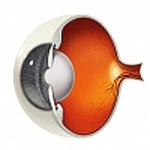
Many people may suffer from cataracts for a long period of time without realizing that they are experiencing cataract symptoms. Most cataract patients will say that colors aren’t as bright as they think they should be and may have a difficult time driving at night. The affects of Cataracts can come on slowly and gradually. About 50% of people over the age of 60 suffer from cataracts. Cataract surgery is one of the most common medical procedures performed in the today. Cataract surgery usually only lasts about 10-15mins and is typically an outpatient procedure.
Before the surgery, the eye must be cleaned and dilated so that a topical anesthetic can be administered. A small incision will be made and an ultrasonic device will be inserted. The front part of the lens is carefully opened so that the lens material can be removed. A small ultrasonic device then pulverizes the hardened proteins that form the cataract, and that material is then vacuumed from the eye. A folded intraocular lens, specifically chosen to suit your individual vision needs, is then inserted through the original incision and centered within the lens capsule. Intraocular lenses cannot be felt or sensed in any way by the patient. The cataract specialist will make sure the lens is positioned correctly, and the opening will self-seal without the need for stitches.
The recovery period after cataract surgery is usually a quick one. Most patients will notice increased vision within the first 24 hours of the procedure. Patients are given two different eye medications to be administered as drops several times daily for the first few weeks after surgery. It is important that during the first seven days, patients stay away from strenuous activity and also rubbing their eyes.
If you’d like to learn more about your Cataract options, feel free to Contact Us.





